Syriac and Eastern Christianity
The Book of Calendars
Conversion Tables for Ancient, African, Near Eastern, Indian, Asian, Central American and Western Calendars
By Frank Parise
ISBN: 1-931956-76-6
The book provides easy-to-use tables that translate the calendars of over sixty civilizations into the Julian and Gregorian calendars. An indispensable tool for scholars.
$126.00
Arabic Proverbs and the Manners and Customs of Modern Egyptians
ISBN: 1-931956-84-7
A compilation and translation of Arabic proverbs by an early 19th century traveler in Cairo, Egypt. Entries are arranged alphabetically in Arabic and by number. Cultural and figurative explanations are provided in English.
$102.00
The History of Alexander the Great
Series: Kiraz Chronicles Archive 3
ISBN: 1-59333-011-1
This is a Syriac edition, with English translation, of the folk-lore and legends connected to Alexander the Great. This ancient text represents a Greek text that is much older than any other known version.
$252.00
Extracts from the Ecclesiastical History of John Bishop of Ephesus
Series: Kiraz Chronicles Archive 12
ISBN: 1-59333-015-4
Composed in three parts, the book chronicles a critical period in the Syriac Orthodox Church, and represents the greatest literary work by the author. It includes grammatical, historical, and geographical notes in English and German.
$115.00
Dictionary of the Dialects of Vernacular Syriac
ISBN: 1-59333-017-0
The main Neo-Aramaic-English dictionary for the dialects spoken by the "Eastern Syrians [Assyrians & Chaldeans]", including illustrations from the dialects of the Jews of Zakhu and Azerbaijan, and of the Western Syrians of Tur Abdin and Ma'lula.
$172.00
Grammar of the Dialects of Vernacular Syriac
ISBN: 1-59333-018-9
The primary grammatical reference for the Neo-Aramaic dialects "spoken by the Eastern Syrians [modern Assyrians & Chaldeans] of Kurdistan, North-West Persia, and the Plain of Mosul," includes notices of the dialects of the Jews of Azerbaijan & Zakhu.
$179.00
A Treatise on Syriac Grammar by Mar Elia of Soba
ISBN: 1-59333-019-7
One of the main sources from which the famous Bar Hebraeus might have drawn his knowledge of Syriac grammar to write his semhe. This book is not only important for the history of Syriac grammars, but can be used to learn grammar itself.
$129.00
The Festal Letters of Athanasius
ISBN: 1-59333-021-9
The text of the long-lost Festal Letters of St. Athanasius, discovered by Cureton. The volume is dedicated to H.G. Francis, Duke of Bedford.
$77.00
Narrative of a Visit to the Syrian [Jacobite] Church of Mesopotamia
ISBN: 1-59333-022-7
Southgate's encounters with the Syriac-speaking Christians of Turkey shed a light on the life and status of this ancient Christian minority.
$154.00
The Eucharist Service of the Syrian Orthodox Church: Meaning and Interpretation
By K. P. Paul
ISBN: 1-59333-023-5
An illustrated commentary on the text, meaning and interpretation of the Qurbono (Eucharist Service), including a discussion of all vestments and church parts, written by a leading bishop of the Syriac Orthodox Church from India.
$81.00
The Widmanstadt-Moses of Mardin Editio Princeps of The Syriac Gospels of 1555
A Facsimile Limited Numbered Edition with an Introduction by George A. Kiraz
Edited by George Anton Kiraz
ISBN: 1-59333-999-2
A facsimile reprint of the first edition of the Syriac New Testament, published by J. A. Widmanstadius and Moses of Mardin in 1555. This limited collector's edition is custom bound, with long lasting high-quality acid-neutral paper.
$563.00
Grammar of the Aramaic Syriac Language
ISBN: 1-59333-031-6
One of the most detailed and accessible grammars of the Syriac language written in Arabic, covering both morphology and syntax.
$205.00
The Book of Common Prayer [shhimo] of the Syrian Church (Paperback)
ISBN: 1-59333-033-2
A translation (from the Syriac) of the West Syriac Daily Offices, known as the book of shhimo.
$121.00
Hymns of the Eastern Church
ISBN: 1-59333-054-5
Translated directly from the original Greek, this book was the first anthology of Eastern hymnology available in English. It quickly became popular after its publication and was used in the English-speaking churches of the Anglican Communion.
$91.00
The Syriac Alphabet for Children (Paperback)
ISBN: 1-59333-112-6
This booklet presents the Syriac alphabet according to the West Syriac script, known also as Serto. With twenty-two illustrations, it is a great introduction to the alphabet for children, parents, and students of Syriac. Paperback version
$21.00
The Syriac Alphabet for Children (Hardback)
ISBN: 1-59333-113-4
This booklet presents the Syriac alphabet according to the West Syriac script, known also as Serto. With twenty-two illustrations, it is a great introduction to the alphabet for children, parents, and students of Syriac.
$41.00
Book of the Order for the Burial of the Clergy
Translated by Murad Barsom
ISBN: 0-9744442-0-0
The first edition of this much needed text is now available in Syriac with a facing English translation. The book covers the orders for the burial of deacons, priests, prelates, and nuns, followed by their respective memorial service.
$85.00
Symbols of Church and Kingdom
A Study in Early Syriac Tradition
ISBN: 1-59333-150-9
In this revised and updated edition of his classic work, Robert Murray offers the fullest and most vivid picture yet available of the development and character of the culture. It will be of interest to a wide range of readers.
$84.00
Eastern Christians, The Last Arameans
ISBN: 1-59333-077-4
The first and only extensive treatment of the genocide of the Aramaic-speaking Christians of the Middle East, in particular the Syriac Orthodox communities, in the late 1800s and early 1900s under the Ottomans. Courtois bases his study on the diplomatic archives of the French Foreign Affairs office (Quai d'Orsay), the archives of the Dominican Mission at Mosul, Iraq, written eyewitness accounts, and oral interviews with genocide survivors conducted by the author.
$184.00
The Laughable Stories Collected by Mar Gregory John Bar-Hebraeus
ISBN: 1-59333-123-1
The first complete edition, containing 727 "laughable stories", by Bar-Hebraeus. It was the child of the compiler's old age, and says much for the broadmindedness and versatility of the learned Bar-Hebraeus.
$89.00
Grammar of Modern Syriac Language as Spoken in Urmia, Persia, and Kurdistan
Series: Kiraz Historical Grammars Archive 7
ISBN: 1-59333-124-X
A detailed grammar, with extensive vocabulary, of the Neo-Aramaic dialect as spoken in Urmia, by a missionary of the American Board in Persia.
$132.00
The Diacritical Point and the Accents in Syriac
By J. B. Segal
ISBN: 1-59333-125-8
The only detailed study of the diacritical and vocalization system of Syriac. Segal examines the history and usage of the diacritical point, from before the seventh century, up to the thirteenth century, taking into account both the East and West Syriac traditions.
$132.00
The Nestorians or The Lost Tribe
With a New Introduction by H.L. Murre-van den Berg
By Asahel Grant
ISBN: 1-59333-154-1
Grant gives an account of his interactions with the "Nestorians", arguing that they “are indeed the representatives and lineal descendants of the Ten Tribes.” His vivid descriptions of their lives and traditions are a valuable resource on the "Nestorian" Christians in the early 1800s.
$106.00
Descriptive List of Syriac and Karshuni Manuscripts in the British Museum
ISBN: 1-59333-155-X
This is a catalogue of Syriac and Karshuni manuscripts purchased by the British Museum by W. Budge in 1889 and 1890 at Mosul, Alkosh, and the Tiari district. This is the sequal to Wright's Catalogue of the Syriac manuscripts in the British Meuseum, also available from Gorgias Press.
$58.00
Healing in the Theology of Saint Ephrem
ISBN: 1-59333-156-8
Ephrem, the most celebrated writer of the Syriac Church, presents a wide range of theological themes and images that are characteristic of fourth-century Syrian Christianity. A significant theme that no one has yet studied in Ephrem is the concept of sickness and healing. This book presents the significance of healing theology and the ways in which the healing of man - spiritually, mentally, and corporally - is highly valued by Ephrem. The main part of the book deals with the causes of spiritual sickness and the process of healing, and the way in which Ephrem places them in the divine history of salvation.
$207.00
Filter by
Filter by price
Filter by manufacturer

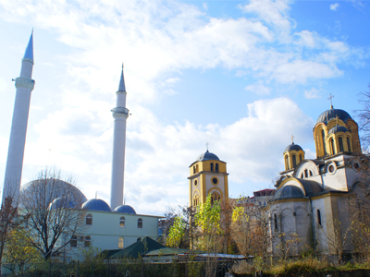
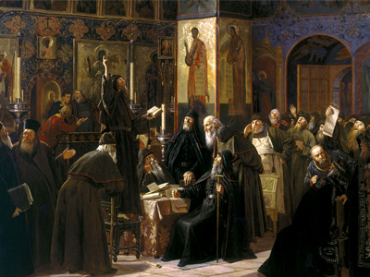
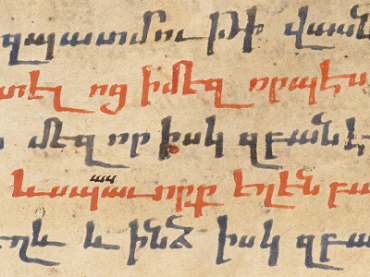
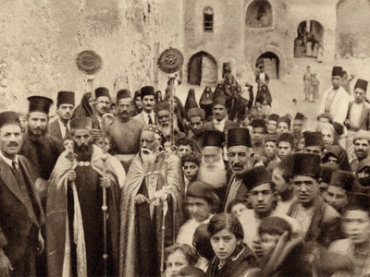
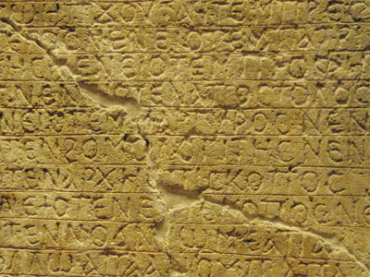
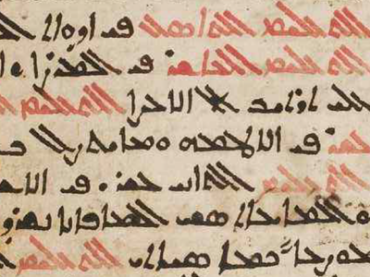








![Show details for Narrative of a Visit to the Syrian [Jacobite] Church of Mesopotamia Picture of Narrative of a Visit to the Syrian [Jacobite] Church of Mesopotamia](https://gorgiaspress450.forefrontinfotech.com/images/thumbs/0011275_360.png)



![Show details for The Book of Common Prayer [shhimo] of the Syrian Church (Paperback) Picture of The Book of Common Prayer [shhimo] of the Syrian Church (Paperback)](https://gorgiaspress450.forefrontinfotech.com/images/thumbs/0011291_the-book-of-common-prayer-shhimo-of-the-syrian-church-paperback_360.png)











